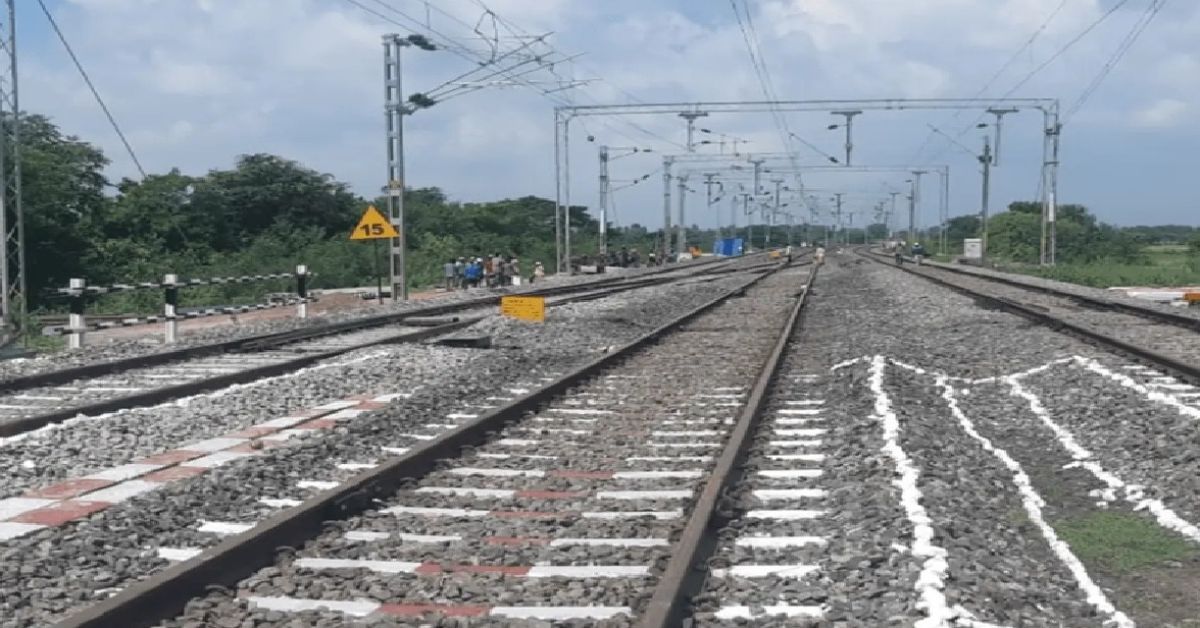India’s strategic pivot in its northeastern connectivity blueprint has led to a pause in several cross-border railway projects routed through Bangladesh, raising new questions over the region’s infrastructural future and regional diplomacy.
With at least three major ongoing railway projects halted and five others in the preliminary stages of development being deferred, New Delhi is recalibrating its plans by turning its gaze northward—towards Nepal and Bhutan—and strengthening domestic networks through the vulnerable Siliguri Corridor. This significant policy reorientation, estimated to reroute nearly ₹5,000 crore worth of investment, stems from concerns over the deteriorating political stability and worker safety in Bangladesh, according to senior government officials familiar with the matter. The projects shelved for now include the strategically important Akhaura–Agartala cross-border railway line, the Khulna–Mongla Port rail route, and the Dhaka–Tongi–Joydebpur rail corridor expansion. These lines were envisioned to serve as vital arteries linking India’s northeastern states to the mainland via Bangladeshi territory, cutting transit times and reducing reliance on the congested Siliguri route.
Instead, the Indian government is contemplating a fresh investment plan ranging between ₹3,500 to ₹4,000 crore to explore transit alternatives through neighbouring Nepal and Bhutan. The move could serve a dual purpose: reducing dependency on a single foreign partner and opening new avenues for regional connectivity through sustainable and diversified routes. Despite the geographical and logistical hurdles, especially in Bhutan which lacks a functional railway network, New Delhi is betting on long-term diplomatic cooperation and existing rail agreements, particularly with Nepal, to achieve its objectives.
Concurrently, authorities are accelerating efforts to boost internal infrastructure capacity. Survey work is underway for doubling and even quadrupling critical railway lines in Uttar Pradesh and Bihar—states that serve as feeders into the narrow and ecologically sensitive Siliguri Corridor. Often dubbed India’s ‘Chicken’s Neck’, this corridor remains the sole domestic land link to the northeastern states and is vulnerable to both natural and geopolitical disruptions. Strengthening this stretch is seen as non-negotiable for India’s national security and logistical sustainability.
The broader narrative reflects a strategic rebalancing of India’s transport diplomacy—one that is increasingly rooted in resilience, decentralisation, and foresight. By investing in greener, more diversified infrastructure that respects ecological and security imperatives, India is also inching towards its vision of sustainable and equitable urban development. These decisions hold profound implications not just for freight and passenger mobility but also for economic integration, gender-neutral access to services, and carbon-conscious infrastructure development in one of India’s most isolated yet culturally rich regions.
While the shift may be seen as a setback for India-Bangladesh collaboration in the short term, officials indicate that the door remains open for cooperation when conditions become favourable. For now, the pragmatic course is to prioritise internal stability, multi-modal resilience, and neighbourly ties that can weather uncertainty. This redirection—however challenging—may well be the impetus India needs to reimagine its northeastern connectivity through a more sustainable and self-reliant lens.







